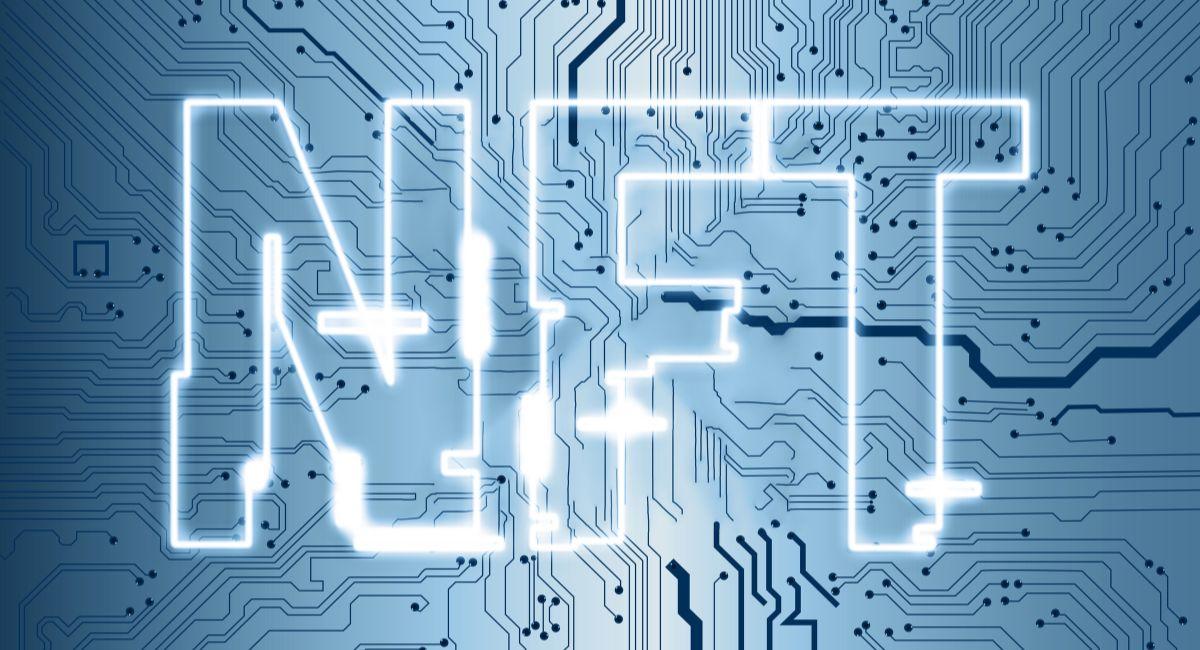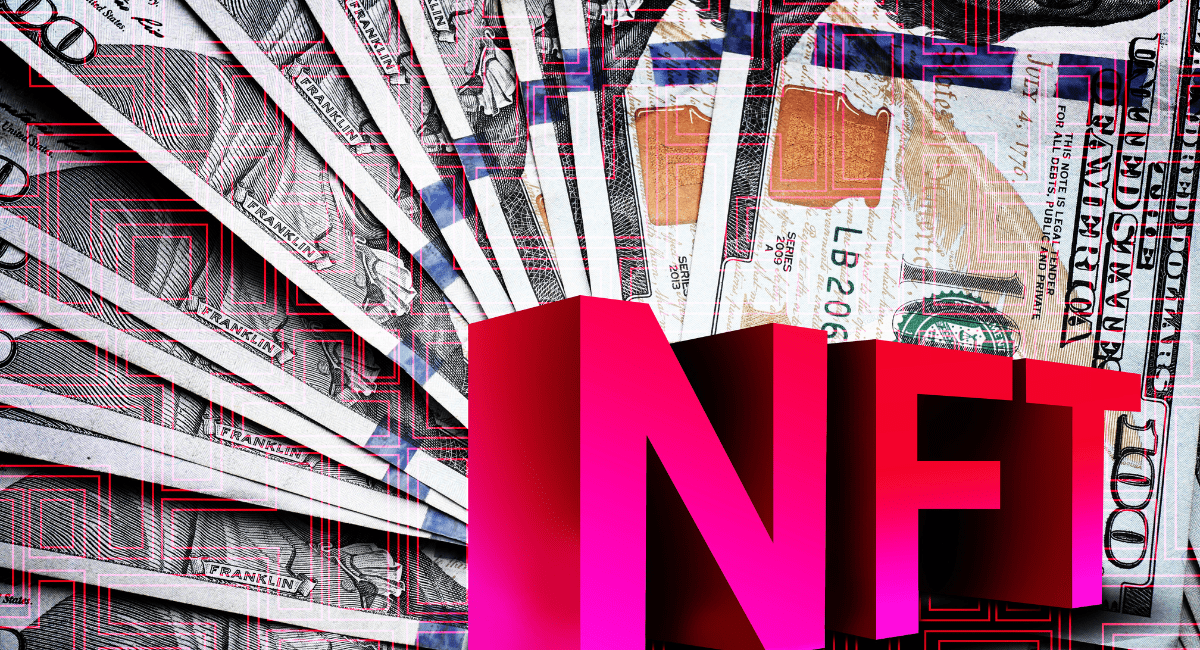Top 10 NFT Trends That Are Here To Stay And Burst Any Going Dead Bubble

Entering the year 2024, the Non-Fungible Token (NFT) trends space is undergoing significant transformations, marked by a dynamic interplay of innovative technologies and collaborative efforts. In this expansive article, we delve into the top 10 trends reshaping the NFT industry, offering a comprehensive overview of the evolving landscape.
Top 10 trends reshaping the NFT trends in the industry:

- Metaverse Integration: The growing prominence of the metaverse is influencing the NFT space. Virtual real estate, digital assets, and entire metaverse ecosystems are undergoing tokenization, ushering in new opportunities for creators and investors. This trend signifies a fundamental shift in how we perceive and engage with digital environments.
- Utility NFTs: NFTs are transcending the realm of digital collectibles, evolving into practical assets with real-world applications. Utility NFTs provide access to exclusive content, experiences, or services, expanding the functionality of these tokens beyond mere ownership. This shift broadens the scope of possibilities for creators and users alike.
- Sustainable NFTs: Addressing environmental concerns, the NFT industry is embracing sustainability. Blockchain networks with eco-friendly consensus mechanisms and NFT platforms prioritizing carbon neutrality are gaining traction. This trend reflects a collective effort within the industry to mitigate its environmental impact and pursue a more sustainable path forward.
- Dynamic NFTs: The era of static digital collectibles is giving way to dynamic and interactive NFTs. Creators are exploring animated, responsive, and programmable NFTs, providing collectors with evolving artworks that challenge traditional notions of ownership. This trend injects a new layer of creativity into the digital art landscape.
- DAOs and NFT Communities: Decentralized Autonomous Organizations (DAOs) are gaining prominence as communities form to collectively govern NFT projects. This trend fosters inclusivity, allowing participants to actively shape the development and direction of NFT initiatives. The rise of DAOs highlights a shift towards decentralized governance structures.
- Cross-Platform Interoperability: Interoperability is a crucial factor for the widespread adoption of NFTs. Projects facilitating seamless interaction and transfer of NFTs across different platforms are gaining popularity. This trend breaks down silos, enabling users to experience and trade their digital assets across diverse ecosystems.
- AI-Generated NFTs: The convergence of Artificial Intelligence and NFTs is reshaping the creation process. AI algorithms are now employed to generate unique and compelling digital artworks, pushing the boundaries of creativity and challenging traditional notions of authorship. This intersection opens up new possibilities for artistic expression.
- Gaming NFTs: The gaming industry continues to embrace NFTs, incorporating them into in-game economies and assets. Players can now truly own and trade their in-game items as NFTs, creating new economic models within virtual worlds. This trend is transforming the gaming landscape and providing gamers with unprecedented opportunities.
- NFTs in Education: Beyond art and entertainment, NFTs find application in education. Educational institutions are exploring the use of NFTs for credentialing, issuing diplomas, and certificates as blockchain-based tokens. This trend enhances the security and verifiability of academic achievements.
- Legal and Regulatory Developments: As the NFT space matures, legal and regulatory frameworks are adapting to address emerging challenges. Governments and regulatory bodies are actively engaging with the industry to establish guidelines for token issuance, taxation, and consumer protection. This trend signifies the growing recognition of NFTs as a legitimate asset class.

Friends, #NFTs are not just a passing trend but a leap forward for those who love art and transparency, like me. 🖼📸
What has been your most significant experience that showed you the revolution this technology could bring?💭#TechTalk #NFTCommunity #NFTartwork #photography pic.twitter.com/KMPWqpBav6
— Alfonso Catalano (@AlfonsoCat96194) January 7, 2024
Is there really a future in NFT?

In the fast-evolving landscape of the digital economy, Non-Fungible Tokens (NFTs) have captured the imagination of creators, investors, and enthusiasts alike. Despite recent challenges, the NFT market is poised for significant growth, with projections indicating a substantial increase from $1.6 billion in 2023 to an impressive $3.2 billion by 2027. This begs the question: Is there really a future in the NFT trends?
The Rise of NFTs: NFTs, or Non-Fungible Tokens, have become synonymous with digital ownership, proof of authenticity, and a revolutionary shift in various industries. The allure lies in their ability to provide a unique digital identity to assets, making them indivisible and irreplaceable. This unique proposition has found applications in sectors such as art, gaming, and customer engagement.
Challenges and Obstacles: Recent setbacks, such as OpenSea’s workforce reduction, have raised concerns about the resilience of the NFT trend market. Matt Medved, CEO of nft now, points out that misconceptions, especially associating NFTs with cookie-cutter projects and nonsensical price points, pose challenges to market growth. Overcoming these obstacles requires a concerted effort in educating the mainstream market about the transformative potential of NFTs.
Integration with Real-World Assets: One of the pivotal trends shaping the future of NFT trends is the integration with Real-World Assets (RWAs). This innovation unlocks opportunities to transform illiquid physical assets into highly liquid on-chain tokens, enabling instant cross-border investments. From real estate to art and collectibles, tokenization facilitates fractional ownership, broadening participation and ensuring market liquidity.
Need for Regulatory Clarity: Experts unanimously call for a more user-friendly infrastructure and regulatory clarity to safeguard consumers and investors. While regulatory moves are not expected in 2024, the industry must focus on educating policymakers about the distinct value of NFTs compared to cryptocurrencies. A clear regulatory framework is deemed essential for fostering a stable and reliable NFT ecosystem.
Market Growth Leading to Value-Based NFTs: The NFT trends market is undergoing a shift from speculative growth to a more value-driven phase. In 2024, projects are urged to introspect on the real value and utility they bring to the table. This evolution results in more sustainable and valuable NFT projects that withstand market fluctuations. Whether preventing counterfeiting in fashion or providing a platform for digital formats in publishing, the focus is shifting towards utility-driven value.
Environmental Concerns: A growing ethical concern within the NFT trends space revolves around the environmental impact. The computations required to validate transactions and mint new tokens on the blockchain contribute to a significant carbon footprint. Environmental consciousness among consumers raises ethical dilemmas, emphasizing the need for companies to consider the environmental impact of NFTs.
Brand and Artist Collaborations: Collaborations between established brands, artists, and digital art communities are seen as a crucial step in promoting NFT adoption and creative expression. Initiatives like the Adidas Digital Art Studio Residency showcase the convergence of art and fashion, expanding the audience for creators and investors. This inclusivity fosters a more mainstream acceptance of NFT trends.
While the future of NFT trends might not replicate the bull run of 2021, the positive outlook stems from utility and value-driven projects, creative collaborations, and a growing demand for real-world applications. As NFTs continue to engage industries and usher in a new generation of creators and builders into web3, their role in the digital economy seems destined to expand. The trajectory of the NFT market appears promising, driven by innovation, culture, and a dynamic blend of utility and creativity.
Also, read- A Comprehensive Guide On How To Find Highly Investable NFTs
Conclusion:
The conclusion encapsulates the dynamic and ever-evolving nature of the Non-Fungible Token (NFT) space in 2024, underlining the significance of the identified trends and their profound impact on the industry. Let’s explore this conclusion in vast detail:
Continuous Evolution of the NFT Space: The NFT trends ecosystem is not static; it is in a constant state of evolution. The rapid pace of technological advancements, coupled with the creative ingenuity of artists, developers, and innovators, propels the NFT space into new territories. This continuous evolution is a testament to the adaptability and resilience of the industry in the face of changing trends and challenges.
Forefront of Innovation in 2024: As we analyze the trends shaping the NFT landscape in 2024, it becomes evident that the industry stands at the forefront of innovation. The identified trends, ranging from metaverse integration to sustainable practices, exemplify the forward-thinking approach of the NFT community. Innovators within the space are not only anticipating future needs but actively shaping them, contributing to the cutting-edge nature of the NFT landscape.
Metaverse Integration – Redefining Digital Spaces: The integration of NFTs with the metaverse marks a pivotal shift in how we conceive and engage with digital spaces. The metaverse is no longer a speculative concept but a tangible reality, with NFTs serving as the cornerstone of virtual interactions. This trend not only expands the reach of NFTs but also redefines the very nature of digital presence and ownership within immersive digital environments.
Diversification and Expansion Across Industries: The NFT ecosystem is not confined to a singular niche; it’s diversifying and permeating various industries. Beyond the traditional realms of art and collectibles, NFTs are making inroads into gaming, education, virtual real estate, and more. This diversification is a testament to the versatility of NFTs, showcasing their ability to adapt and add value across a spectrum of sectors.
Sustainable Practices – Addressing Environmental Concerns: The recognition of environmental concerns within the NFT trends space highlights a commitment to sustainability. Blockchain networks with eco-friendly consensus mechanisms and platforms prioritizing carbon neutrality are indicative of an industry cognizant of its ecological footprint. This sustainable approach not only aligns with global environmental priorities but also demonstrates the responsibility of the NFT community.
Shaping the Narrative of NFTs: The identified trends are not mere developments; they collectively contribute to shaping the narrative of NFTs. The industry is moving beyond being perceived solely as a marketplace for digital assets; it is becoming a transformative force influencing how we create, share, and value digital content. The narrative of NFTs is evolving from a niche concept to a mainstream phenomenon, with implications for the broader digital landscape.
Ushering in a New Era of Possibilities: The trends discussed in this analysis are not isolated occurrences; they collectively usher in a new era for NFTs. This era is characterized by unprecedented possibilities and opportunities. Creators find new avenues to monetize their work, collectors experience a redefined sense of ownership, and investors navigate an ever-expanding landscape of digital assets. The amalgamation of these opportunities signifies a paradigm shift with far-reaching implications.
In conclusion, the NFT space in 2024 is a vibrant, dynamic, and transformative ecosystem. The identified trends are not merely surface-level observations; they represent the underlying currents propelling the industry forward. As we navigate this new era of possibilities, the influence of NFTs will continue to permeate and redefine the digital landscape, leaving an indelible mark on the way we create, exchange, and appreciate digital assets.



























































